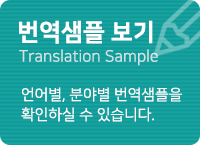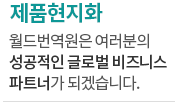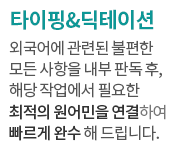
for119@gmail.com,
trn114@nate.com
(대용량 파일)

번역샘플보기 Translation Sample
월드번역원은 각 분야에 최적합한 전문 번역사를 섭외하여 고객 맞춤 프리미엄 서비스를 제공합니다.
실제 작업한 번역 샘플을 확인하시고 월드번역원의 고품격 번역서비스를 이용 해 보세요!

 번역샘플보기
번역샘플보기
|
| ADMIN | 2021-06-16 00:25:06 |
|
원문
The tide began to turn against preexistence theories in the 1740s, starting with Abraham Trembley's spectacular discovery of the freshwater hydra. This polyp appeared to be infinitely plastic with respect to its possibilities for regeneration. It could be sliced, severed, turned entirely inside out: in every case the hydra either regenerated the lost part, generated a second individual, or, in the last instance, simply grew a new outside altogether. The impact of this discovery cannot be overestimated for its revolutionizing effect on the life sciences. Questions poured out as a consequence of this discovery: How could preexistence theory explain this capacity? How, in this instance, could one insist on the lifelessness of the animal-machine? It hardly helped matters to note the problem of categorizing the polyp altogether, so far as it seemed to be essentially a plant with a stomach. Problems in classification had in fact begun to multiply as botanists in particular complained of the difficulty in fitting their observations to Linnaeus's system, and categories assigned to indeterminate species thus slowly began to overshadow the so-called pure lines. In the late 1740s, Pierre Louis Maupertuis, the newly elected president of the Berlin Academy of Sciences, began to collect records that he would publish on a family known for its many cases of polydactylity. If, as those records indicated, a trait could be passed on by both female and male members of the family, the basic tenets of preexistence theory had to be wrong: generation must be an active process, one clearly requiring the contribution of both mother and father in the production of an embryo. Against this kind of evidence, it almost seemed beside the point to wonder what God would have had in mind when preforming deformities such as those experienced by the family of polydactyls. |
|
번역본
1740년대 전존재(前存在) 이론에 반하는 물결은 Abraham Trembley의 민물 히드라에 대한 경이로운 발견에서 시작되었다. 이 폴립은 재생의 가능성의 측면에서 본다면 무한히 유동적인 것으로 보였다. 그것은 잘릴 수도, 절단하고 완전히 뒤집을 수도 있었다. 그 모든 경우에도 히드라는 잃어버린 부분을 재생하거나 두번째 개별체를 발생시키거나 마지막 경우에는 단순히 새로운 것으로 성장했다. 이 발견의 충격은 생명과학에 준 혁명적인 결과라는 점에서 과대평가될 수 없다. 이 발견의 결과로 질문들이 쏟아졌다. 즉, 전존재 이론은 이러한 능력을 어떻게 설명할 수 있는가? 이 경우에 어떻게 동물-기계의 무생물성을 주장할 수 있는가? 본질적으로 위(胃)를 가진 식물처럼 보이는 한, 폴립을 분류하는 문제에는 거의 도움이 되지 않았다. 분류의 문제는 사실상 특히 식물학자들이 자신의 관찰을 린네의 체계에 들어맞도록 만드는 어려움을 증대시키기 시작했다. 따라서 결정할 수 없는 종에 부여된 카테고리는 천천히 소위 순계(純界) 구분에 어둠을 드리우기 시작했다. 1740년 후반 베를린 과학 아카데미의 새롭게 선출된 회장이었던 Pierre Louis Maupertuis는 다지증(多指症)의 많은 사례로 알려져 있는 어떤 가족에 대해 출판할 기록을 수집하기 시작했다. 만일 기록이 지시하듯이 그러한 특성이 가족의 여성과 남성 구성원 모두에 의해 유전될 수 있다면 전존재 이론의 기본 주장은 틀린 것이 될 것이다. 즉, 발생은 능동적인 과정이어야 하며, 분명히 배아의 생산에 있어서 어머니와 아버지 모두의 공헌이 필요하다. 이런 증거에 반하여 다지증의 가족이 경험하는 것과 같은 기형을 미리 만들어놓으면서 하나님이 무슨 생각을 하고 있었을지를 궁금해 하는 것은 요점에서 벗어난 것일 것이다. |
고객만족을 최우선으로 생각하는 (주)월시스 월드번역원 입니다.


 ISO 9001 인증서
ISO 9001 인증서











